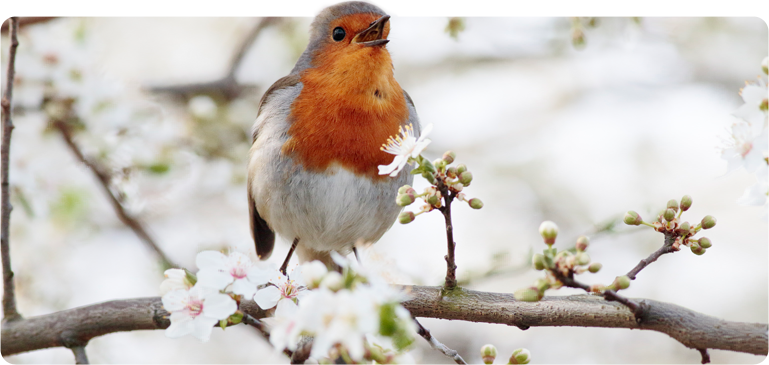Crisis
We now see billions of fewer birds than we did only half a century ago. Urban development poses risks to birds, with approximately 1 billion birds dying in North America from window collisions each year alone.4 Migrating birds unfamiliar with their surroundings are unable to see exterior window glass in their search for habitat. Others are attracted to the reflective windows, mistaking them as an extension of the sky and trees. This inability to see the glass causes them to collide with the windows at full speed, which is most often substantial enough to be fatal. With the increase in urban development in recent years, city centres have become a growing issue when it comes to bird collisions. For example, Toronto contains one-third of all tall buildings in Canada, and being located in a migratory corridor for birds, has experienced significant fatalities due to collisions with glass buildings.5

The continued decline of our bird populations will shift the entire stability of our ecosystems. Birds play an integral part in pest control by protecting some of the world’s most valued crops including coffee beans and wine grapes.6 And while we often credit bees as being the best pollinators, there are 2,000 bird species across the world that also pollinate.7 Birds are some of the first to be affected by environmental changes and help scientists sound the alarm over concerns like pesticide and toxin levels.8 Further to this, positive results related to economic activity and increases in jobs can be linked to birding-related tourism.9
With nearly two-thirds of North American birds at risk of extinction, now more than ever we have a responsibility to protect our feathered friends.10 Feather Friendly® Bird Deterrent Technology is a simple solution that makes a big mark when it comes to bird conservation.
Sources:
1. FLAP Canada: https://birdsafe.ca
2. Milius, Susan, and Science News. “Stop Blaming Cats: As Many as 988 Million Birds Die Annually in Window Collisions.” The Washington Post. WP Company, February 3, 2014.
3. U.S. Fish & Wildlife Service, Department of the Interior: https://www.fws.gov/birds/bird-enthusiasts/threats-to-birds.php
Connor, Kevin. “Next to cats, buildings are the biggest killer of birds.” Toronto Sun. May 18, 2018
4. FLAP Canada: https://birdsafe.ca
5. The City of Toronto. “Bird Friendly Development Best Practices – Glass.” City of Toronto, City Planning, July 2016.
6. Sekercioglu, C.H., D.G. Wenny, and C.J. Whelan. 2017. Why Birds Matter. Univ. of Chicago. Pp. 53- 55.
7. US Forest Service: https://www.fs.usda.gov/research/fishwildlife/birds
8. Yeoman, Barry. “What Do Birds Do for Us?” National Audubon Society. April 8, 2013.
9. Boere, G.C., C.A. Galbraith, & D.A Stroud (eds). “Waterbirds Around the World.” The Stationery Office, Edinburgh, UK, 2006.
10. National Audubon Society. “New Audubon Science: Two-Thirds of North American Birds at Risk of Extinction Due to Climate Change.” Audubon, October 24, 2019.
